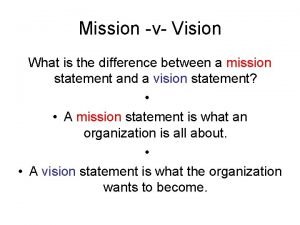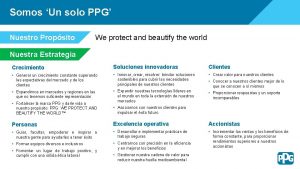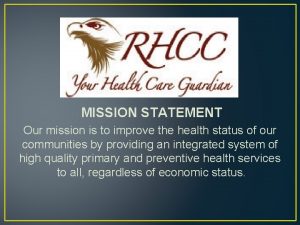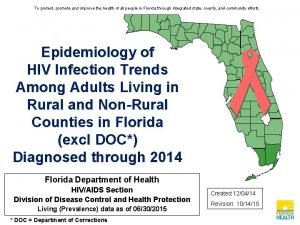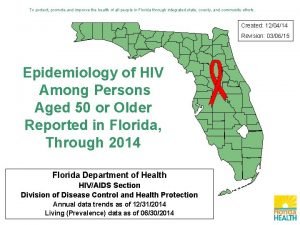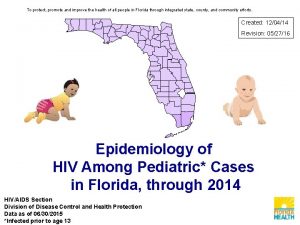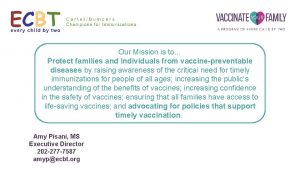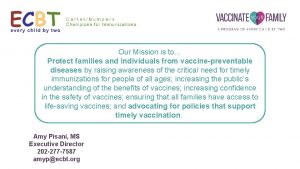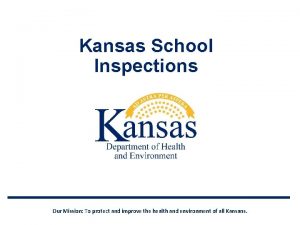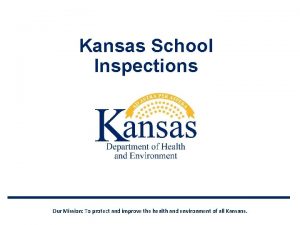Our Mission To protect and improve the health

























- Slides: 25

Our Mission: To protect and improve the health and environment of all Kansans.

The Emergency Medical Treatment and Labor Act EMTALA

Definitions • Hospitals include both acute care and critical access. • “Hospital with an emergency department” means any hospital with a dedicated ED. • “Dedicated ED”—any emergency department or facility of the hospital that is 1) licensed by the state, 2) held out to the public as providing treatment for EMCs and 3) 1/3 or more of the visits to the ED were for EMCs to be seen on an urgent basis. This includes individuals who present for an unscheduled ambulatory care-- such as labor and delivery patients and psychiatric patients.

Definitions • “Capacity” means the ability of the hospital to accommodate the individual requesting examination or treatment of the transferred individual. Capacity encompasses such things as numbers and availability of qualified staff, beds and equipment and the hospital’s past practices of accommodating additional patients in excess of its occupancy limits. • “Labor” means the process of childbirth beginning with the latent or early phase of labor and continuing through the delivery of the placenta. A woman is considered to be in true labor unless after observation for a reasonable amount of time, a qualified professional (as defined by the medical staff bylaws) has determined the person is in false labor.

Definitions • “Emergency medical condition” is a medical condition manifesting itself by acute symptoms of sufficient severity (including psychiatric illness/symptoms) such that the absence of immediate medical attention could reasonably be expected to result in: – Placing the health of the individual or an unborn child in serious jeopardy; – Serious dysfunction of bodily functions; – Serious dysfunction of any bodily organ or part. • In evaluating a pregnant woman having contractions one must consider: • If there is adequate time to effect a safe transfer before delivery; and, • if that transfer might pose a threat to the health and safety of the woman or unborn child.

Definitions • “Hospital property” means the entire hospital campus including the parking lot, sidewalk and driveways. It excludes other areas or structures of the main building that are not part of the hospital such as physician offices, rural health centers, skilled nursing facilities, or other entities that participate under Medicare or restaurants, shops or other non-medical facilities. • “Inpatient” means an individual who is admitted to a hospital for bed occupancy purposes receiving inpatient hospital services (excludes observation status) with the expectation that he/she will remain at least overnight. • EMTALA does not apply to hospital inpatients. This does not include admissions to an observational status. Admissions to inpatient status must be done in good faith and with the intention to provide treatment and not simply done to satisfy EMTALA requirements.

Definitions • “Stabilize” (with respect to the EMC) means 1) that no material deterioration of the condition is likely, within reasonable medical probability, to result from or occur during the transfer of the individual from a facility; or, 2) that the woman has delivered the child and placenta. • “Transfer” means the movement (including discharge) of an individual outside a hospital’s facilities at the direction of any person employed by, affiliated or associated with both directly and indirectly with the hospital. It does not include those that have been declared dead or those who leave the facility without permission of any such person.

Requirement: Medical Screening Examination (MSE) • • • EMTALA requires hospitals with emergency departments to provide a medical screening examination (MSE)to any individual who comes to the emergency department (ED) and request an examination. The request can be implied based on the patient condition. If a prudent layperson observer would believe, based on the individuals’ presentation, that the individual needs an emergency evaluation or treatment-- than EMTALA obligations exist. The purpose of the MSE is to determine whether or not an emergency medical condition exists. The MSE must be conducted by an individual determined qualified by hospital bylaws, rules and regulations. The designation of the qualified medical personnel should be set forth in a document approved by the governing body. EMTALA prohibits hospitals with an ED to refuse examination or treatment to individuals with an emergency medical condition. (EMC) EMTALA applies to all individuals seeking emergency care—not just Medicare beneficiaries.

MSE Information • A MSE is the process required to reach a conclusion-- with reasonable clinical confidence-- whether a medical emergency does or does not exist. • Depending on the presentation, the MSE represents a spectrum ranging from only a brief history and physical exam to a complex process involving ancillary diagnostic studies or procedures including (but not limited to) clinical lab tests, CT scans, lumbar punctures or other diagnostic tests or procedures. • The MSE must be the same MSE the hospital would preform on any other individual, regardless of the ability to pay. • If an individual was misdiagnosed, but the hospital utilized all its resources to make an appropriate diagnosis, a violation of screening did not occur.

MSE INFORMATION • If the examination reveals an EMC and the patient is told to wait for treatment but the patient leaves the hospital anyway-- there is no EMTALA issue UNLESS: – The individual left based on a “suggestion” by the hospital; or, – The condition was an emergency but the hospital was operating beyond capacity and did not attempt to transfer the individual. • If the patient leaves AMA or LWBS or AWOL (without a suggestion they do so…)there is no violation. • The hospital should obtain (or attempt to obtain) written and informed refusal of any examination, treatment or appropriate transfer.

Requirement: Necessary Stabilizing Treatment • Necessary stabilizing treatment is required for all patients with either an emergency medical condition or those who are in labor. • Examination or treatment must not be delayed so that inquiries about insurance or payment status can be discussed or verified. • The hospital may ask for the insurance card and seek information about the medical history and basic demographic information but it should not delay the medical screening examination. • TRIAGING IS NOT EQUIVALENT TO A MSE—TRIAGING MERELY DETERMINES THE ORDER IN WHICH PATIENTS SHOULD BE SEEN, NOT THE PRESENCE OR ABSENCE OF AN EMERGENCY MEDICAL CONDITION. • After stabilizing the patient, the hospital no longer has an EMTALA obligation.

Transfer Information • The facility must provide for an appropriate transfer if 1) the individual requests the transfer or, 2) the hospital does not have the capability or capacity to provide necessary stabilizing treatment for the EMC or admit the patient. • Discharge instructions to go to another facility are improper transfers under EMTALA. • No adverse actions should be taken against a physician or qualified medical professional who refuses to transfer an individual with a EMC or against an employee who reports a violation of EMTALA requirements. • Individuals who refuse to consent to transfer must be informed of the risk and benefits and document the refusal.

Transfer Information Requirements for an “appropriate” transfer 1. The transferring hospital provides medical treatment within its capacity that minimizes the risks to the individual’s health or the health of an unborn child; 2. The receiving facility has agreed to accept the patient, has space and qualified personnel available for the treatment; 3. The transferring hospital sends to the receiving facility all medical records related to the emergency medical condition which are available at the time of transfer; and, 4. The transfer is effected through qualified personnel and transportation equipment.

Acceptance of Transfers Hospitals with specialized capabilities must accept an appropriate transfer of an individual who requires such specialized capabilities-- if the hospital has the capacity to treat the individual. Two components must be satisfied: 1. The individual must require the specialized capabilities; and, 2. The receiving hospital must have the capacity to treat the individual.

Requirements: Signage • Post signage in conspicuous places in the ED in areas noticed by all individuals who are entering, waiting, or receiving emergency treatment. – Specify the rights of the individual with EMCs and women in labor; – Indicate whether the facility participates in the Medicaid program; – The wording must be clear, stated in simple terms and in languages that are understandable by the population served;

• • Requirements: On-call Lists A list of physicians who are on-call for the initial examination to provide treatment necessary to stabilize an individual with an EMC is required. The on-call list identifies and ensures that the ED is prospectively aware of which physicians, including specialists and subspecialists are available to provide care. CMS does not have requirements regarding how frequently on-call physicians are expected to provide coverage. Hospitals have the ultimate responsibility for ensuring adequate on-call coverage. To evaluate compliance, CMS will consider all relevant factors, including the # of physicians on staff, other demands of these physicians, the frequency with which the hospital’s patients typically require services of oncall physicians and the provisions the hospital has made for situations in which a physician in the specialty is not available or the on-call physician is unable to respond. CMS acknowledges that no physician is required to be on call at all times. Physician group names are not acceptable for identifying on-call physicians. Individual physician names must be used. If a physician is on call simultaneously for more than one hospital, the hospital must have a Policy & Procedure to follow when a physician is unable to respond because he/she has been called to another hospital. The policy must meet the needs of the individuals presenting for emergency care. Physicians who refuse to be included in on-call lists but see patients who they have a doctor-patient relationship while refusing to see other patients may violate EMTALA. Hospitals permitting selective on-call coverage may be in violation of EMTALA. CMS does allow flexibility concerning exemptions to certain medical staff members, such as senior physicians. Keep on-call lists for 5 years for enforcement purposes.

Requirement: Central Log • A central log on each individual who “comes to the emergency department seeking assistance and whether he/she refused treatment, was refused treatment, or whether he/she was transferred, admitted and treated, stabilized and transferred, or discharged. • The log may be maintained in a form that best meets the needs of the hospital. • The log must include patients from areas in the hospital that are included in the “dedicated emergency department” such as labor and delivery and psychiatric patients.

Ambulances • “Hospital property” includes ambulances owned and operated by the hospital-even if the ambulance is not on the hospital campus. • An individual in a nonhospital-owned ambulance located off hospital property is not considered to have come to the hospital’s ED, even if a member of the ambulance staff contacts the hospital by telephone or telemetry communications and informs the hospital that they want to transport the individual to the hospital for examination and treatment. • The hospital may direct the ambulance to another facility if they are on diversionary status. If, however the ambulance staff disregards the diversion instructions and transports the individual onto hospital property, the individual is considered to have “come to the emergency department” and EMTALA applies.

Psychiatric Emergencies • If an individual expresses suicidal or homicidal thoughts or gestures, if determined to be a danger to self or others, they would have an emergency medical condition. • Psychiatric patients are considered stable when they are protected and prevented for injuring or harming themselves or others. The administration of chemical or medical restraints may remove the immediate EMC but the underlying condition may persist. Practitioners should use care when determining if the medical condition is in fact stable after such interventions.

Women in Labor • A woman in labor may be transferred only if she or her representative requests the transfer and if a physician or other qualified medical personnel signs a certification that the benefits outweigh the risks. If the hospital does not provide OB services, the benefits may outweigh the risks. • Hospitals that are not capable of handling high-risk deliveries or highrisk infants often have transfer agreements for such cases but the hospital must still meet screening, treatment and transfer requirements. • Provide MSE to OB patients, patients with undiagnosed acute pain, symptoms of substance abuse, or symptoms of psychiatric disturbances sufficient to first rule out general medical, toxic, or traumatic conditions and thereafter to adequately evaluate and treat these specific conditions.

Non-medical Service Delivery • If an individual presents to the ED and requests services that are not for a medical condition (immunization, allergy injection, flu shot) or the gathering of evidence for criminal law cases (sexual assault, blood alcohol tests), the hospital is not obligated to provide a MSE under EMTALA, • If an individual is brought for alcohol testing by law enforcement with the request for blood alcohol testing only and does not request an examination and a prudent lay person observer would not believe an examination or treatment is necessary then EMTALA screening is not required. Be careful to provide medical screening if it is indicated. • When law enforcement request medical clearance for incarceration the hospital does have an EMTALA obligation and a MSE is required. If an EMC exists, the hospital must meet the full EMTALA obligation.

National Emergencies • CMS will issue guidelines as appropriate in the event of a national emergency and its impact upon EMTALA regulations.

Enforcement • EMTALA enforcement is a complaint-driven process. • If a complaint investigation reveals the hospital or one of its qualified medical practitioners violated EMTALA, the hospital may be subject to termination from the Medicare program or the imposition of civil monetary penalties. • Civil monetary penalties may be imposed against the hospital or individual physicians. • A hospital that suspects it may have received an improperly transferred individual is required to promptly report the incident. Failure to report an improperly transferred patient may result in termination from the Medicare program.

EMTALA TO-DO CHECKSHEET. q Have a centralized ED log that includes all patients seen urgently and without an appointment (L&D, psychiatric patients) q Develop and enforce EMTALA P&Ps q Provide education to staff, physicians and your governing body q Evaluate ED process to assure there is not delay in starting the medical screening examination due to gathering of information or payment discussions. q Provide a medical screening examination to all patients presenting to the ED by a professional designated to be qualified to do so in the Medical Staff Bylaws, Rules and Regulations. q Provide necessary testing and diagnostic analysis to exclude the presence of an emergency medical condition. q Stabilize patients to the extent capable to prevent deterioration during transfer or after discharge. OB patients with contractions are unstable until contractions cease or the baby and placenta are delivered. q Provide on-call coverage schedules and maintain the list for 5 years. q Assure on-call specialists area; attending to patients in a timely manner and assure they are providing legally defining stabilizing care. q Monitor transfers to assure that they occur only at the patient's request or due to services or care unavailable at your facility. q Be sure to obtain and document advanced acceptance for transfers from the receiving hospital. q Provide physician certification that risk of transfer are outweighed by the benefits of transfer. q Always provide transfers by medically appropriate vehicles, personnel and life support equipment to the destination hospital. A private auto does not meet these standards, even if the physician thinks it is acceptable unless the patient has signed a refusal for an ambulance. q Be sure you have EMTALA signage in public entrances, waiting areas, registration and care areas and any remote site that qualifies as a designated ED, such as the L&D area. q Report suspected violations or result of appropriate transfers to avoid enforcement for non-reporting.

Our Mission: To protect and improve the health and environment of all Kansans.
 Protect, promote, and improve the health of all people
Protect, promote, and improve the health of all people What should we do to protect our environment
What should we do to protect our environment Images
Images Awareness of ourselves and our environment is
Awareness of ourselves and our environment is Our awareness of ourselves and our environment
Our awareness of ourselves and our environment Our awareness of ourselves and our environment.
Our awareness of ourselves and our environment. Awareness of ourselves and our environment is:
Awareness of ourselves and our environment is: Our mission at aveda
Our mission at aveda Ppmds
Ppmds Our church's wider mission
Our church's wider mission Vision of company
Vision of company Thinking affects our language which then affects our
Thinking affects our language which then affects our Our census our future
Our census our future Ok 313
Ok 313 Marcus aurelius our life is what our thoughts make it
Marcus aurelius our life is what our thoughts make it We bow our hearts
We bow our hearts Our census our future
Our census our future Our life is what our thoughts make it
Our life is what our thoughts make it Money madness poem ppt
Money madness poem ppt God our father christ our brother
God our father christ our brother Our future is in our hands quotes
Our future is in our hands quotes Horizon europe mission soil health and food
Horizon europe mission soil health and food The fifth, sixth, seventh, and eighth amendments protect *
The fifth, sixth, seventh, and eighth amendments protect * Survive and protect the endangered plants
Survive and protect the endangered plants We protect and beautify the world
We protect and beautify the world Health and social component 3
Health and social component 3










